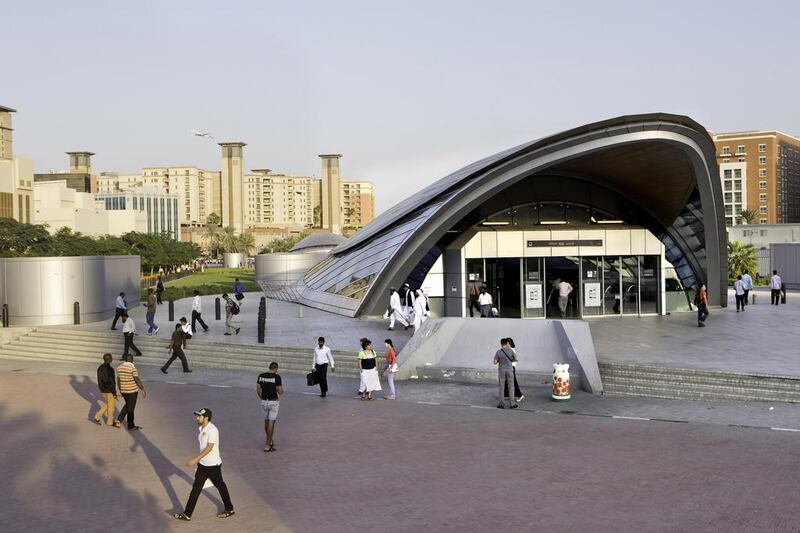Hundreds of new flats and offices could be built above Dubai’s busiest metro station in Deira if plans for a new public-private partnership take off.
Dubai’s Roads and Transport Authority (RTA) is asking international real estate companies to submit bids for developing blocks of flats and offices above the two-level Union Metro station complex in Deira as part of a public-private partnership.
It said that it would be inviting property developers to submit plans to build a number of towers above the 19,000 square metres station – the largest underground metro station complex in the world.
RTA said that the project above the station, also known in Arabic as Al Ittihad, would be the first of its kind in the region, encouraging more people to use the Metro and leave their cars at home and to bring more businesses and homes to old Dubai.
The public body said that it would select a developer to build the flats, offices, shops and restaurants through a public tender process.
The exact size of the towers and mix of uses in them will be left to developers to determine though their “development and operational expertise and business acumen in accordance with the vision and objectives of the RTA”, the RTA said.
Deira’s location close to Dubai International Airport will probably mean that the buildings are unlikely to be more than 20 or 30 storeys high. The size of the plot is also likely to mean that the scheme is restricted to three or four towers.
Mattar Al Tayer, chairman of the board and executive director of the RTA, said that the project was part of a plan to redesign neighbourhoods around Metro stations in Dubai.
“The project is aimed to raise the efficiency and users of mass transit systems through replanning of districts around the Metro stations. The project will contribute to augmenting the ridership of the Dubai Metro and develop as well as landscape the urban environment in the vicinity of Al Ittihad Station,” he said.
“The project focuses on providing high-class residential and office environment characterised by pedestrian-friendly roads, greens, vital utilities, retail outlets among others,” he added. “The high population density in the project will contribute to supporting RTA drive towards encouraging the residents to use public transport.”
Dubai’s authorities have been attempting to build high-density development on a number of Metro stations in the city since before the rail system was opened in 2009. However, although previous studies were commissioned, plans were delayed by the global financial crisis.
Under traditional public-private partnership agreements used commonly in Asia and the United States, the state provides the land to a developer for a term of 50 to 60 years. A property developer provides the money and expertise to build the project and recoups its cash through property rents and sales.
Developing homes and offices above public transport hubs is nothing new in Europe, Asia and the US, where town planners are under pressure to reduce car use and stop urban sprawl. Experts point to Pacific Place in Hong Kong and Raffles Square in Singapore as examples. However, in the lower- density Middle East, the concept has been slower to catch on.
Over the past couple of decades in Deira, once a thriving centre of Dubai, older ramshackle buildings have been unable to compete with swanky developments in the newer parts of Dubai, prompting an exodus by richer inhabitants and leaving some parts looking shabby by comparison.
“Union Station is a very good location for such a scheme,” said Craig Plumb, the head of research in Jones Lang LaSalle’s Dubai office. “It’s a very busy intersection in a high-density location. The Government is keen to revamp the area, but it is often in multiple ownerships and so it is often hard to find enough suitable land for new development.”
“This sort of development above a railway station is very complex. It is likely to be of interest to the handful of international developers which have a track record in building this sort of scheme,” he added. “Public-private partnerships have been used a lot in Asia to finance this sort of development and international developers should feel comfortable with this method of funding.”
However, although public-private partnerships have been used in the UAE to build power and water projects as well as schools and hospitals, other attempts to use the funding method for road and retail construction have encountered stumbling blocks.
lbarnard@thenational.ae





